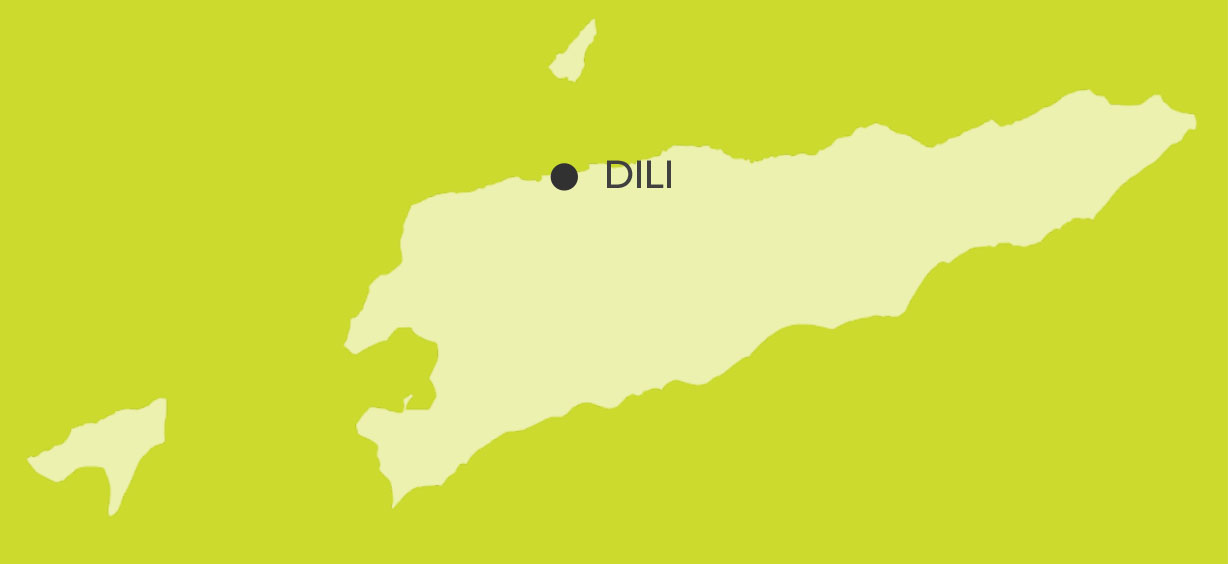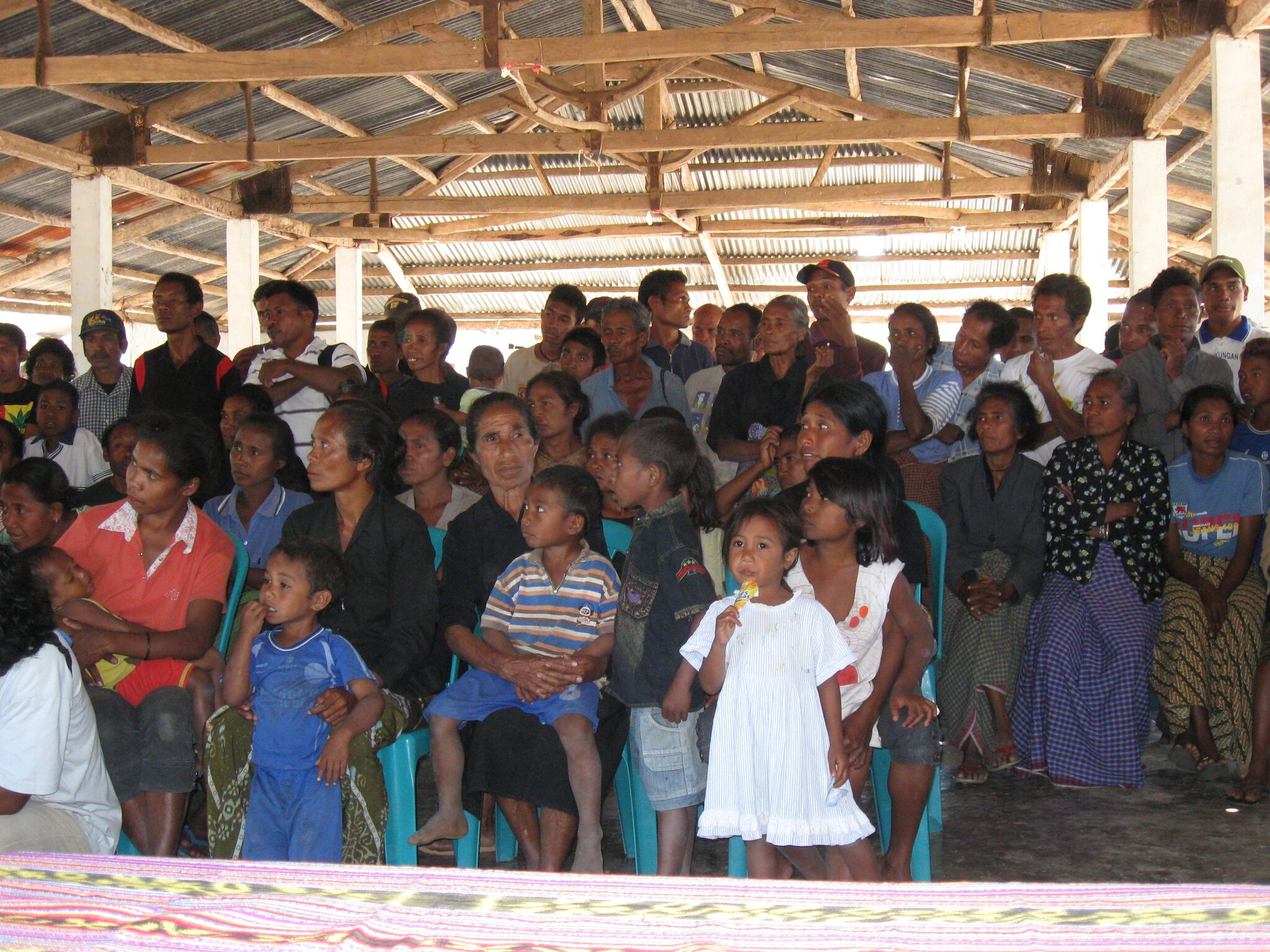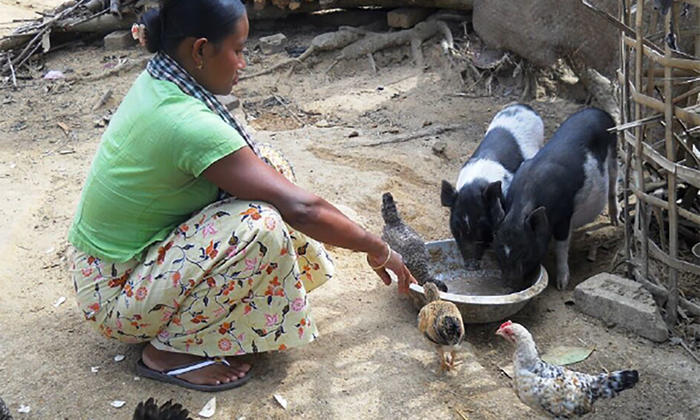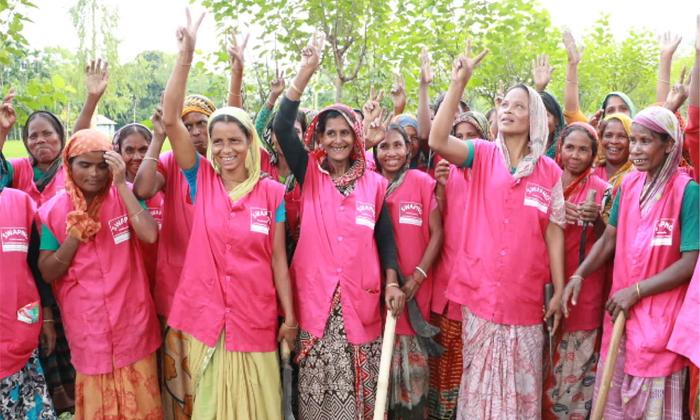The prevalence of underweight under-five children dropped from 45.7 per cent in 2009 to 28.9 per cent in 2012
Case study
A taste for transformation in Timor-Leste

SDGs ADDRESSED
This case study is based on lessons from the joint programme, Promoting sustainable food and nutrition security in Timor-Leste
Read more
Chapters
Project Partners



1. SUMMARY
The programme on “promoting sustainable food and nutrition security in Timor-Leste” (the Programme) was undertaken in late 2009 to address the conditions contributing to chronic and acute undernutrition through a harmonized approach utilizing both technical support and long-term capacity building. Through establishing a public-private partnership, micro-nutrient rich food could be locally produced, enhancing the fragile private sector whilst simultaneously addressing chronic maternal and child malnutrition.

Programme beneficiaries
2. THE SITUATION
As one of the world’s youngest countries, Timor-Leste experienced various hindrances to societal development. The underdevelopment of public and private sectors such as education, health and economy created a cycle of disadvantage and thus a multi-sectorial approach was vital to any effective development initiative. For example, the high prevalence of illiteracy, with 49.1 per cent of women and 38.7 per cent of men illiterate in Tetum among persons over the age of 15, hindered economic participation for both genders, with women also facing additional challenges due to cultural norms. A lack of economic mobility manifested in restricted land ownership rights, capital and credit access.
This environment also led to the emergence of an informal private sector, where a series of micro-enterprises had developed, primarily dominated by women and their families selling small products like household goods. This alternate sector was not participating in the growth of the national economy as the activities were often unpaid or paid in non-monetary forms. There were various structural factors which damaged private sector development in Timor-Leste, including the absence of an effective legal framework and a reluctance to invest in the seemingly fragile young republic.
A major developmental issue affecting Timor-Leste was stunting occurring due to chronic malnutrition, especially that of children under five years and young mothers. The rates of stunting were at a startling high of 58 per cent when the Programme began.
The Programme, a public-private partnership initiative occurred through the establishment of a partnership with a major local coffee producer, Timor Global, and UN agencies WFP and UNICEF. This partnership was part of the three-year Programme which ran from late 2009 to early 2013 and was implemented in four districts; Aileu, Baucau, Manatuto and Oecusse, with the objective of rapidly reducing maternal and child malnutrition rates. This partnership resulted in Timor-Leste’s inaugural food processing operation, Timor Vita, a Fortified Blended Food supplying children under the age of five and pregnant and lactating mothers with the essential nutrients required for healthy development.

Timor Vita nutritional supplement
3. STRATEGY
With the objective of addressing child and maternal Moderate Acute Malnutrition (MAM), part of the Programme focused on the local production of a supplementary feeding product. Through the public-private partnership with food production company, Timor Global, the Timor-Leste Ministry of Health and WFP, the Programme was able to provide a sustainable solution to acute malnutrition whilst building local capacity and improving food storage issues. The food produced, Timor Vita, was a substance specifically tailored to the taste and needs of the people of Timor-Leste. It was tested by local people and packaged in an easily transportable manner.
The three-way partnership was an example of a social business established in Timor-Leste. Each partner had an integral role to ensure it benefited those targeted and allowed the growth of local production, in order to diminish reliance on foreign imports and produce a better tasting and fresher product. WFP initially provided technical assistance through managing the conversion of the food production plant and training factory staff and local farmers to ensure quality standards were met. The Ministry of Health purchased the processing and packing equipment necessary to set up the factory. Timor Global was the local production partner. The UN partners also contributed a generator to stabilize production and the Government of Timor- Leste invested US$ 2 million in the project in 2012.
Timor Vita not only supplied women and children with an accessible, fresh supplementary food but also encouraged local economic growth through the promotion of local agriculture and the creation of employment opportunities for around 40 workers within the food production factory. Although the costs of purchasing Timor Vita were on par with those of imported substances, it had a longer shelf life and therefore saved money by preventing wastage.

4. RESULTS AND IMPACT
Timor Vita was distributed to all pregnant women and lactating mothers and children who were 6-59 months old when they were visiting health service delivery points. There was a significant reduction in cases of stunting, with an estimated 52 per cent in 2014, illustrating a decrease of almost 6 percent since the beginning of the partnership in 2009.
The partnership with Timor Global to produce Timor Vita was a promising progression in term s of sustainable food security and national economic growth. After only a single year of operation, the site was already producing approximately 30 per cent of the optimal quantity of Timor Vita and providing enough food to feed 64,000 people, demonstrating positive signs for a steady increase in years to come.
From the perspective of Timor Global, the venture was considered a corporate social responsibility initiative, not a pure business proposition. However, wide acceptance of the product and growing demand indicated good prospects for the product in the future. The partnership also provided the framework for further improvements in food security and nutrition practices, evidenced through the recent pilot programme to incorporate fish into the product in an effort to raise the nutritional value and support the growth of aquaculture. The aquaculture industry addressed malnutrition whilst providing income-generating activities in otherwise resource-poor rural areas.
1 RIN, 2014 ‘More Investment Needed to Reduce Stunting in Timor Leste’ http://www.irinnews.org/report/100147/more-investment-needed-to-reduce-stunting-in-timor-leste
2 Sergio Lenci, 2012 ‘Promoting Sustainable Food and Nutrition Security in Timor-Leste’ Final Evaluation Timor-Leste MDG-F/UNDP p.7 http://mdgfund.org/sites/default/files/Timor%20Leste%20-%20Nutrition%20-%20Final%20Evaluation%20Report.pdf
3 The project document titled ‘Mobilize Social Business to Accelerate Achievement of Timor‐Leste MDGs’ is also a telling example of the impact the public-private partnership has had by identifying the establishment of a strong private sector based upon social enterprises as a key factor to the country’s achievement of the MDGs.
5. CHALLENGES
Although the partnership with Timor Global demonstrated a positive first step towards the establishment of a strong network of social enterprises in Timor-Leste, there were significant challenges which required a concerted effort by a range of actors in order to ensure optimal sustainability and efficacy. Firstly, even though the Programme aimed to discourage foreign imports, substantial barriers were met in the sourcing of entirely locally produced raw materials. At the conclusion of the Programme, Corn Soya Blended Powder (CSB) was still being imported to cover the needs of the entire populace as were raw materials for the Timor Vita production.
To conquer this challenge, further investment was still required, as expressed by Timor Global’s senior executives. Many ventures currently experience great difficulty in getting private international banks to invest in the country, due to a belief that it is of high risk because of a fragile economy.
Several institutions and organizations are engaged in private sector development in Timor-Leste, though economic development is in its earliest stages. Several challenges remain: lack of access to markets, capital and meaningful participation in value chains; restricted access to productive assets; a need for practical business skills and market-based business planning; government or donor dependency; and lack of transport and distribution.
4 In Sergio Lenci ibid p.8

6. LESSONS LEARNED
- Much greater resource allocation is needed to achieve sustainable food and nutrition outcomes.
- A greater emphasis on addressing structural factors, including income‐generating activities at the local level, needed to be more directly addressed to generate sustainable nutrition outcomes.
- There was a need to support the implementation of the local purchasing strategy of the School Feeding Programme by strengthening the productive capacity of farmers groups so that they could become local suppliers to the government.
- It is beneficial to emphasize the analysis of gender-related factors influencing nutritional status and to address them from an operational point of view during implementation.
- A tremendous effort was required to build partnerships between stakeholders at all levels, involving the government, United Nations agencies, non-government organizations and the private sector.

7. SUSTAINABILITY AND POTENTIAL FOR REPLICATION
While the WFP continued supplying Timor Vita for malnourished children, pregnant women and lactating mothers until the end of 2013, it handed over to the government the planning and management functions of the supplementary feeding programme during 2013 and beyond.
The production of Timor Vita by Timor Global also has good potential for sustainability, as it combines private and public interests in the framework of corporate social responsibility. Nevertheless, some challenges relate to the need for increasing production and reducing costs of Timor Vita, which implies greater investment in the plant and increases in national production of raw material.
Business opportunities in Timor‐Leste are plentiful. Most consumer goods are imported but many imported products have the potential to be produced in‐country. Yet the private sector is at best in a nascent stage, and focused on a narrow range of industries. The overall ease of doing business in Timor‐Leste has improved according to the World Bank in 2012, though the country remains a risky place to invest. Timor-Leste’s ranking of 168 out of a possible 183 countries is attributed to “gaps in: land law, land and property registration, leasing and collateral, bankruptcy, licensing, accounting and auditing, competition policy, intellectual, property rights, social security, and key sectoral legislation in areas of tourism, manufacturing and trade.” The legal frameworks, including pricing and trade policies, still need to be improved in order to ensure ample competition and reasonable risks.
5 International Finance Corporation and the World Bank, Doing Business 2012 http://www.doingbusiness.org/data/exploreeconomies/timor_leste/

Timor Vita production facility







